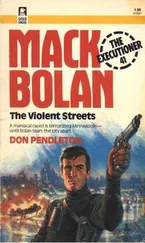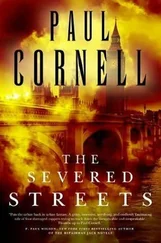“If I don’t get one soon,” says Edgerton, jumping red lights on Frederick Road in the early morning darkness, “I’m going to have to kill someone.”
For two full weeks, Edgerton’s name has been affixed to the board’s wooden frame with a thumbtack, scrawled with a certain infamy on sheets of yellow legal paper that list the squad and detective expected to handle the next homicide call. The daily postings are another indication of D’Addario’s change in demeanor; detectives who have handled fewer murders are now being identified and designated as candidates for the next call. Most especially that means Edgerton. Having handled only two homicides this year, the veteran’s pace is not only a controversy within his squad but a loaded issue for D’Addario as well. For the last two weeks, every one of his postings began and ended with Edgerton’s name. It has become something of a daily joke in the coffee room:
“Who’s up today?”
“Harry’s up.”
“Christ. Harry’s gonna be up ’til October.”
For days now, Edgerton has bounced from shootings to stabbings to questionable deaths to overdoses, waiting earnestly for something-anything-to come back as a murder.
And it hasn’t worked. On days when he has handled three or four calls, running from one end of the city to the other looking at bodies, other detectives have picked up the phone and been blessed with double-dunker massacres. Edgerton handles a shooting call and the victim is guaranteed to survive. He works an apparent bludgeoning and the ME is guaranteed to rule the cause of death an overdose, followed by injuries sustained when the victim collapsed on the cement floor. Edgerton goes to the scene of an unattended death and it’s A-1-guaranteed to be an eighty-eight-year-old retiree with a chronic heart condition. None of which means a thing to D’Addario. Edgerton is up until he gets a murder, the lieutenant repeats. If it takes the rest of his career, fine.
This makes for one very irritable homicide detective. It’s one thing, after all, to be considered the resident flake on the shift and the problem child in the squad. And to have Kincaid and Bowman and God knows who else bitching about sharing the workload-normally Edgerton can handle that, too. But, he thinks, normal can be tossed out a window when I’m being made to handle three calls a day every goddamn day for what is beginning to seem like the rest of my life.
Edgerton’s urgent need for a murder was evident a week ago, when he began cursing at an overdose victim in the Murphy Homes, demanding from the cadaver a little more cooperation and consideration than had thus far been shown to him.
“You degenerate motherfucker,” Edgerton said, berating the dead man as two housing authority cops stared on in amazement. “Where the fuck did you fire up? I don’t have all fucking day to look at your fucking arms. Where the fuck is that fresh track?”
It wasn’t just the aggravation of a missing needle mark, but the frustration that had been building with each successive call. And at that moment, standing over yet another body in a Murphy Homes stairwell, Edgerton was deeply disturbed that the dead man had done nothing more than kill himself with heroin. What the hell, he pleaded silently, was a murder too much to ask anymore? This was Baltimore, for Chrissakes. This was a dead man in a stairwell at the George B. Murphy Homes housing project. What better place to be shot down with a high-caliber weapon like a dog? What the fuck is this asshole doing with a syringe by his left hand, staring up from the cement floor with that ridiculous half-grin on his face?
“What are you, left-handed?” said Edgerton, rechecking the right arm. “Where the fuck did you shoot your shit?”
The dead man answered with his grin.
“Why,” Edgerton asked the corpse, “are you doing this to me?”
A week later and Edgerton is still the point man for D’Addario’s shift, racing across Southwest Baltimore to yet another shooting call that will, if bad luck holds, be nothing more than a grazing. There will be no crime scene, no suspect, no dead man sprawled at the intersection of Hollins and Payson. Edgerton conjures up not a corpse, but an eighteen-year-old sitting on a gurney in the ER at Bon Secours, fully alert, talking, with nothing more than an Ace bandage wrapped around one arm.
“The El Supremo’s gonna have to give me a break already,” he says, weaving between two lanes in the emptiness of Frederick Avenue. “I just can’t buy a murder.”
He does a Texas stop at the Monroe Street signal, then wheels right onto Payson. Blue strobes from the radio cars greet him, but Edgerton immediately notices the absence of fire department cherry tops. No body on the ground, either. If there was an ambo, Edgerton tells himself, it’s long gone.
The detective marks his time of arrival and slams the driver’s door. A Southwest uniform, a young white kid, sidles up with an earnest look on his face.
“He’s alive, right?” Edgerton says.
“Who? The victim?”
No, thinks Edgerton, Elvis fucking Presley. Of course the victim. The detective nods.
“I don’t think so,” says the uniform. “Not for long anyway. He looked pretty bad in the ambo.”
The detective shakes his head. The kid doesn’t understand what he’s dealing with. I don’t do murders, Edgerton wants to tell him. I just handle calls.
“We got you a witness, though.”
A witness. Now it’s definitely not a murder.
“Where’s this witness?”
“Over there by my car.”
Edgerton looks across the intersection at a short, wire-thin doper who stares back and nods with what appears to be mild interest. This strikes Edgerton immediately, because eyewitnesses forced to remain at the scene of a murder are generally uncooperative and sullen.
“I’ll be over there in a minute. Where’s the victim?”
“Bon Secours. I think.”
“This is the scene right here?”
“This here, and over that way you’ve got some more shell casings. Twenty-twos, I think.”
Edgerton moves slowly into the street, carefully gauging his own steps. Ten shell casings-.22 rifle by the look of them-are scattered across the asphalt, each circled by a yellow chalk mark. The pattern of the spent shells seems to travel west across the center of the intersection, with most of the casings lying near the southwest corner. And at that corner, two more chalk marks note the location of the body when the paramedics arrived. Head east. Feet west at the curb’s edge.
The detective walks the scene for another ten minutes, looking for anything out of the ordinary. No blood trail. No fresh scuff marks. No tire patches. Truly an unremarkable crime scene. In the gutter near the northeast corner, he finds a broken gelatin cap with traces of white powder. No surprise here-the intersection of Hollins and Payson is a drug market after dark. Moreover, the capsule is yellowed and dirty enough to make Edgerton believe it’s been in the street for several days and has nothing to do with his shooting.
“Do you have this post?” he asks the uniform.
“Not usually. But I’m in the sector, so I know this corner pretty well. What do you need to know?”
What do I need to know. Edgerton is beginning to like this kid, who not only knows enough to grab hold of anything at the scene that resembles a witness but is also talking like he knows the area he’s working. In the Baltimore department, this is a situation worthy of nostalgia. Ten or fifteen years ago, a homicide detective could ask a uniform a question and expect an answer. Those were the days when a good man owned his post and one dog couldn’t fuck another at Hollins and Payson without word getting back to the Southwest station house. In that era, a patrolman who worked a post and caught a murder could expect to be asked who hung on that corner and where they could be located. And if he didn’t know, he found out in a hurry. Nowadays, Edgerton tells himself, we’re lucky if the post man can get the street names right. This kid here is a real police. A throwback.
Читать дальше












